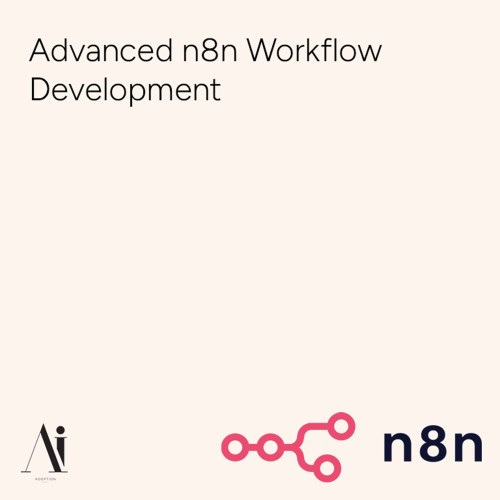
Generative AI Glossary – Part 6
This sixth installment of the Generative AI glossary builds upon previous editions by providing deeper insights into concepts that are central to modern AI development. From latent space optimization to swarm intelligence, these terms reflect the complexity and diversity of challenges faced by professionals in the field. By familiarizing yourself with these ideas, you’ll be better positioned to engage in meaningful dialogue with peers, stakeholders, and experts.
Whether you're a researcher pushing the boundaries of what AI can achieve or a practitioner implementing solutions in real-world scenarios, having a common framework for discussion is essential. We invite you to continue exploring this evolving landscape alongside us, using this expanded glossary as a bridge to connect ideas and drive innovation forward.
Adversarial Robustness
ELI5 – Explain Like I’m 5
Adversarial robustness is like making sure your robot friend doesn’t get tricked by fake pictures or sounds, it stays smart even when someone tries to fool it!
Detailed Explanation
Adversarial robustness focuses on ensuring AI models remain accurate and reliable under adversarial conditions, such as intentionally misleading inputs designed to cause errors.
Real-World Applications
Critical in cybersecurity, autonomous vehicles, and facial recognition systems to prevent malicious attacks.
AutoML - Automated Machine Learning
ELI5 – Explain Like I’m 5
AutoML is like having a robot helper that builds other robots for you. It automatically designs and trains machine learning models without needing much human effort!
Detailed Explanation
AutoML automates the end-to-end process of building machine learning pipelines, including data preprocessing, feature engineering, model selection, and hyperparameter tuning.
Real-World Applications
Used in industries ranging from healthcare to finance to democratize access to AI tools for non-experts.
Cognitive Bias Mitigation
ELI5 – Explain Like I’m 5
Cognitive bias mitigation is like teaching a robot to think fairly and not let its own “opinions” affect how it makes decisions!
Detailed Explanation
This technique involves identifying and reducing biases in AI systems to ensure fair and unbiased decision-making.
Real-World Applications
Applied in hiring platforms, loan approval systems, and criminal justice algorithms to promote equity and reduce discrimination.
Curriculum Learning
ELI5 – Explain Like I’m 5
Curriculum learning is like teaching a robot step-by-step, starting with easy lessons before moving to harder ones, it learns faster this way!
Detailed Explanation
Curriculum learning structures training data in increasing complexity, mimicking human learning processes to improve model convergence and generalization.
Real-World Applications
Used in natural language processing, image classification, and robotics to enhance training efficiency.
Data Augmentation
ELI5 – Explain Like I’m 5
Data augmentation is like giving a robot more toys to play with by changing the ones it already has, it helps the robot learn better!
Detailed Explanation
Data augmentation generates additional training samples by applying transformations to existing data, improving model robustness and reducing overfitting.
Real-World Applications
Common in computer vision tasks like object detection, medical imaging, and speech recognition.
Latent Space Optimization
ELI5 – Explain Like I’m 5
Latent space optimization is like finding the perfect recipe for baking cookies, it tweaks hidden ingredients to make the final result as good as possible!
Detailed Explanation
This process refines the latent representation within generative models to produce higher quality outputs while maintaining diversity.
Real-World Applications
Used in image generation, text synthesis, and music composition to create realistic and varied content.
Swarm Intelligence
ELI5 – Explain Like I’m 5
Swarm intelligence is like watching ants work together to carry food back to their nest, robots use teamwork to solve big problems!
Detailed Explanation
Inspired by collective behavior in nature, swarm intelligence enables decentralized groups of agents to collaborate and solve complex problems efficiently.
Real-World Applications
Used in drone fleets, traffic management, and supply chain optimization to optimize resource allocation and coordination.
Conclusion
As the field of artificial intelligence continues to evolve, it becomes increasingly important to establish a shared language for discussing its core concepts and techniques. This sixth installment of our Generative AI glossary aims to deepen your understanding of key terms that are frequently used in conversations among researchers, engineers, and practitioners. By exploring both foundational and advanced ideas, we hope to equip you with the tools needed to communicate effectively and contribute meaningfully to discussions in the industry.
In this part, we delve into established yet nuanced topics such as adversarial robustness, curriculum learning, and quantum machine learning. These terms may already be familiar to seasoned professionals, but their significance grows as AI systems become more sophisticated and integrated into everyday life. Let’s expand our vocabulary together and enhance our ability to collaborate across disciplines.
 USD
USD  Swedish krona (SEK SEK)
Swedish krona (SEK SEK)





















